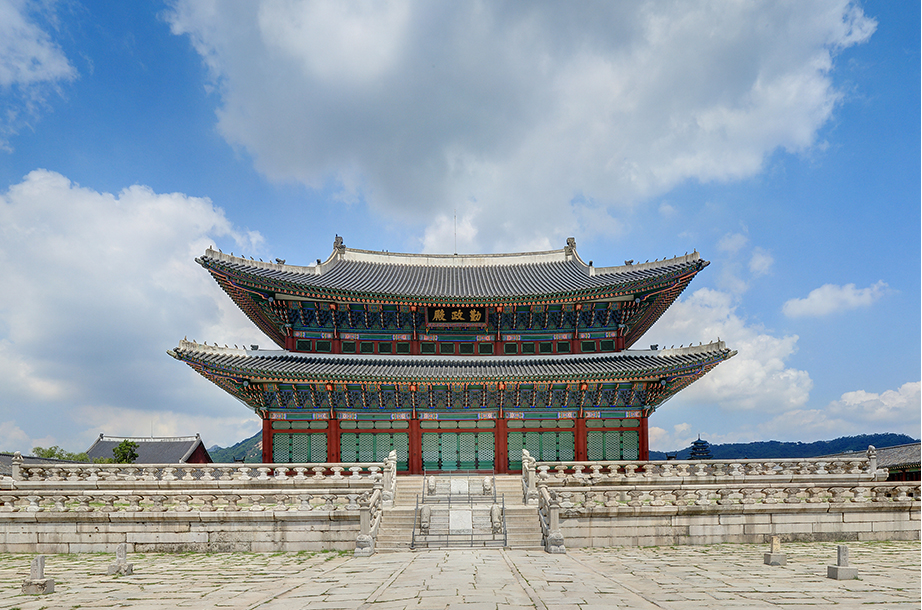Locations
Gyeongbokgung Palace

Address 161. Sajik-ro, Jongno-gu, Seoul
Phone Number 02-3700-3900
Subway Line 3, Exit 5 of Gyeongbokgung Stn
Gyeongbokgung Palace is the prime palace of the Joseon Dynasty that was built in 1395 (the 4th year of King Taejo's reign) to move the capital to Hanyang after the founding of the Joseon Dynasty in 1392. It was the center of Hanyang built against the backdrop of Baegaksan Mountain (now Bugaksan Mountain) in the north and with a wide Yukjogeori Street (now Sejong-ro) in front of the main entrance, Gwanghwamun Gate.
When Gyeongbokgung Palace was built, the buildings were laid out on a formal, straight axis, starting with Gwanghwamun Gate, the main entrance, followed by Heungryemun Gate, Geunjeongmun Gate, Geunjeongjeon Hall, Sajeongjeon Hall, Gangnyeongjeon Hall, and Gyotaejeon Hall, and the surrounding area was built with attached buildings and ponds. Gyeongbokgung Palace is where King Sejong, King Seongjong, and King Jungjong ascended the throne during the early Joseon Dynasty, and it is also where the Hunminjeongneum (Hangul, Korean Script) was created, especially during King Sejong's reign.
During the Japanese Invasion in 1592 (the 25th year of King Seonjo's reign), all the palaces in Hanyang were burned down, and Gyeongbokgung Palace were rebuilt in 1867 (the 4th year of King Gojong's reign). Since then, Hyangwonjeong Pavilion, Jipokjae Hall, and Geoncheonggung Palace have been built to the north of Gyeongbokgung Palace, gradually expanded its area.
However, Gyeongbokgung Palace was deliberately damaged by the Japanese occupation after the Japan-Korea Treaty in 1910. It began to be managed by the Japanese Government General of Joseon in 1911, and from 1915, more than 90 per cent of the buildings were demolished, except for the main ones. In particular, in 1926, the Government-General Building, namely the colonial headquarters of Japan was built, and the palace lost its majesty as a palace. Restoration work began in earnest in the 1990s, starting with the demolition of the former Japanese Government-General building in 1995, and the area of Heungnyemun Gate, Gungcheonggung Palace, and Gwanghwamun Gate were restored to their current state.
- January through February: 09:00~17:00(Final admission at 16:00)
- March through May: 09:00~18:00(Final admission at 17:00)
- June through August: 09:00~18:30(Final admission at 17:30)
- September through October: 09:00~18:00(Final admission at 17:00)
- November through December: 09:00~17:00(Final admission at 16:00)
Closed on Tuesdays(There is no closing day during the K-Royal Culture Festival)
| Age 19~64 | 3,000 won / 2,400 won (group, 10 or more) |
|---|---|
|
|
※ For more information: Visit Gyeongbokgung Palace website.








